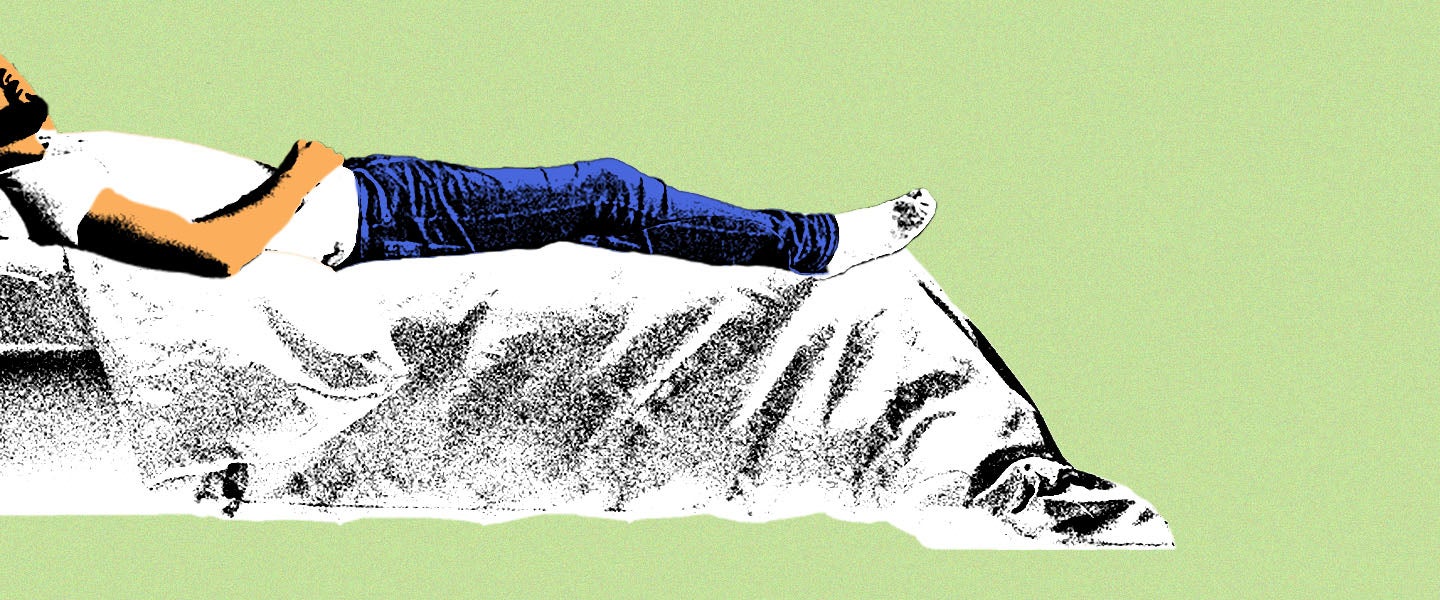“What, did you sleep in your clothes again last night?” Marty McFly’s older brother asks him when Marty wakes in the new-and-improved 1985 at the end of Back to the Future. It’s clear from his brother’s inflection that this isn’t an acceptable behavior, but conventional wisdom — and scorn from a forgettable character in the greatest film of all time — aren’t enough for me. I want to know why this is unacceptable: If my lazy ass wants to pass out in my jeans, I feel I should be allowed to do so without societal judgement.
At least, that’s what my attitude was before I looked into this question, which occurred to me just after delving into my regular, semi-monthly Back to the Future marathon. At first, I figured it was just a bullshit “proper” thing to do, like taking off your hat when you go indoors. Back when I looked into the death of male pajamas, I learned that pajamas were considered “part of a gentleman’s wardrobe,” as fashion and design historian Patrick Hughes told me. A sign of wealth in the upper class before they became mainstream, pajamas would eventually would die out for much of the public, with most guys eventually choosing to wear a T-shirt and some sort of underwear, or even go nude, over a formal pajama set.
Hughes had also explained to me that, before pajamas reached the lower classes of people in the early 20th century, they either slept in a nightshirt or the very same shirt they wore during the day, a practice that would decline as pajamas became more common. Instead, this would only continue as a practice of drunken college kids who pass out on their buddy’s couch, or slackers like Marty McFly (and myself).
But as it turns out, changing your clothes before bed isn’t just the senseless “right” thing to do like, say, making your bed, which literally makes no sense (oh, wait). Instead, there are actually a few good reasons for this, the first of which is germs. According to microbiologist Jason “The Germ Guy” Tetro, author of The Germ Files and host of the Super Awesome Science Show, “As we go through the day, the bacteria on our skin grows and that gets trapped in our clothes. If we continue to wear the same clothes to bed, we may wake up smelling a bit ripe.”
If you’re figuring that you’re going to take a shower in the morning anyway, Tetro adds that there are some other drawbacks to this behavior. For one, those germs on your clothes will be transported to your sheets, affecting their ability to stay fresh. Also: “Having PJs helps us to get a bit of a clean slate for your skin,” says Tetro, explaining that dermatological issues may occur if you let those day germs hang out on you for too long. With this germy buildup, he says that you can risk “dandruff, rashes, irritation and maybe bumps.” He adds that if the germs on your body are the rather common Staphylococcus aureus or Propionibacterium, it could lead to pimples on your face and “other regions” as well. There’s even a name for this kind of skincare neglect: “dermatitis negelecta.”
Germs aren’t all you need to worry about, though, as sleeping in your clothes could seriously affect how well you sleep. “You want to sleep in loose-fitting PJs. Clothes weren’t designed to be worn while sleeping, as buttons, zippers, etc. aren’t particularly sleep-friendly,” says “The Sleep Doctor” Michael Breus, author of The Power of When: Discover Your Chronotype. He recommends sleeping in cotton, as it breathes rather well, or going in the buff, as both of these options can help with “thermoregulation, which is making sure your body stays at an optimal temperature for sleep,” Breus explains.
So unless you want to be a smelly, pimply, germ-ridden, sleep-deprived, ungentlemanly slacker, you’re probably better off changing your clothes before heading to bed. As for me, I’ll have to find a new way to emulate my hero, which means I’m stuck waiting, as ever, for Mattel to build that damn hoverboard already.

